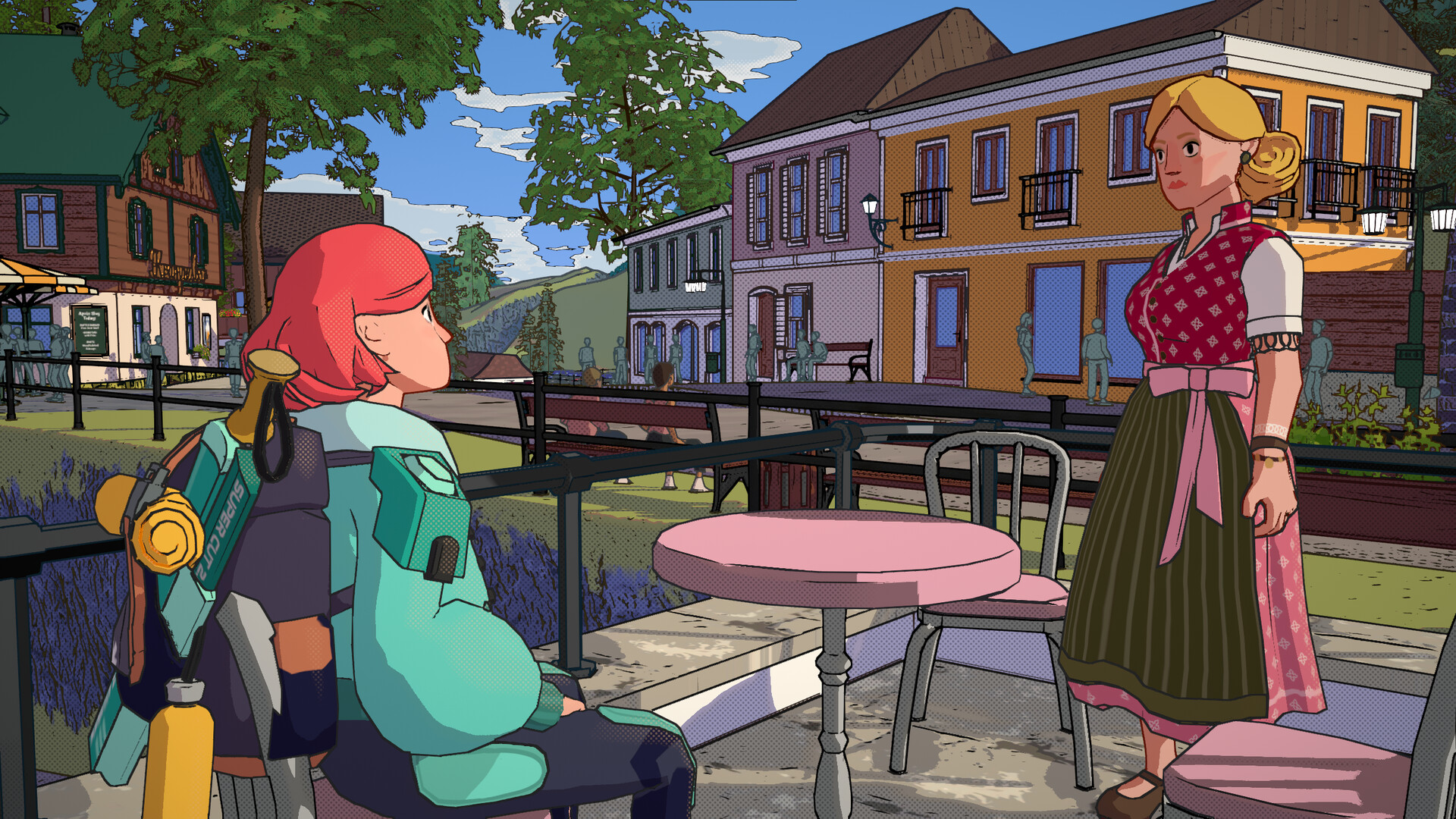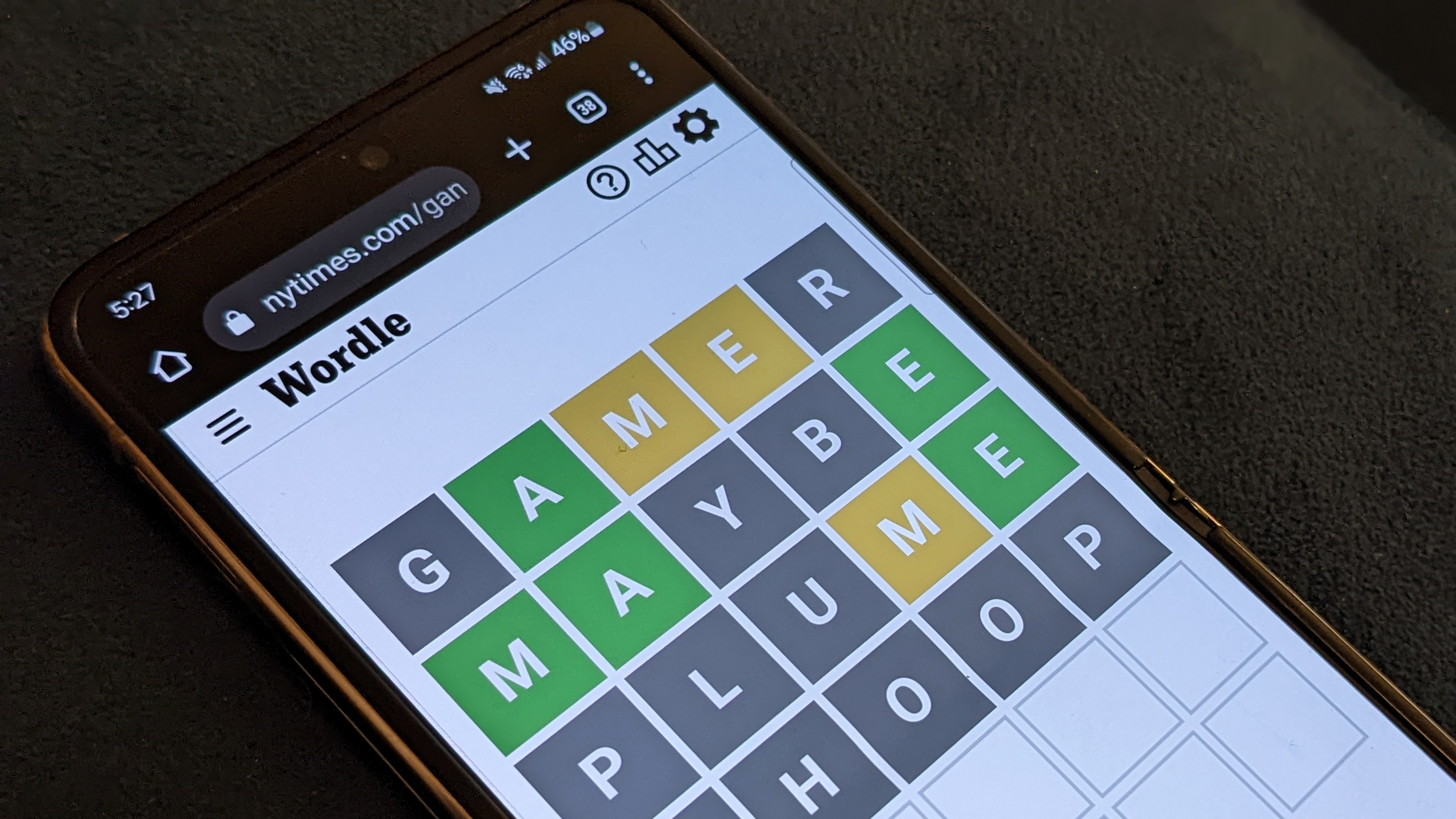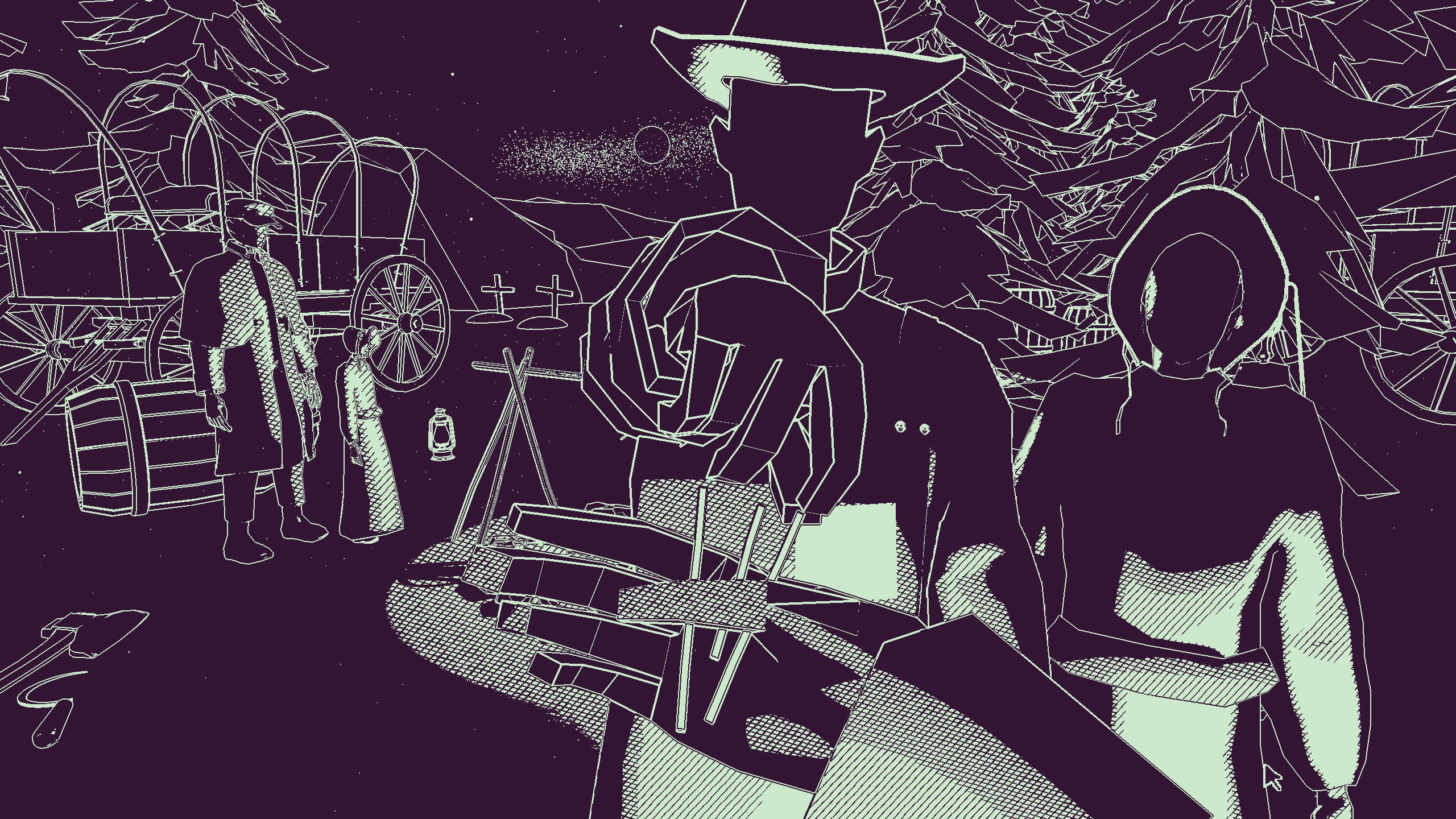
Arguably, slaying monsters in the woods is self-care.
What is it? A holiday in someone else’s fantasy.
Release date July 18, 2024
Developer Microbird Games
Publisher Curve Games
Reviewed on Windows 11, NVIDIA GeForce RTX 2060, AMD Ryzen 9 4900HS, 16GB RAM
Link Official site
Luisa is a young lawyer from Vienna, and she’s burned out. Dungeons of Hinterberg leans into this millennial malaise and twists it cheekily: she’s going to leave the city and take a little break to find herself and figure out what she’s doing with her life in a picturesque Austrian mountain town that’s recently been rocked by the arrival of magic. Instead of ski slopes, Hinterberg has dungeons, the appearance of which has attracted tourists and attention from all over the globe. Surely a few weeks of slaying monsters and completing dungeons will help Luisa solve the aimlessness and fear of being in your mid-twenties and not knowing what to do with your life?
Of course, once Luisa arrives in Hinterberg, it becomes clear that things won’t be that simple. Shortly after she arrives Hinterberg suffers a major earthquake, and rumors begin to circulate that it’s the volatile—and heavily exploited—magic that’s endangering the village. Louisa’s in town for a vacation, but as she meets the locals, socializes with other tourists, and does her own investigating, she begins to agree that there’s more to the glamorous local economy than meets the eye. She’ll still explore the dungeons, of course, but between excursions it’s the reality of the village and its magical industry that becomes paramount, and Dungeons of Hinterberg does an excellent job of striking a balance between Luisa’s search for meaning and the larger story of the town.
My time as Luisa was split into strict time blocks. Morning she eats breakfast, afternoon she completes a dungeon or relaxes at a scenic spot, evening she explores the town and socializes, and at night she can read, watch TV, or head straight to bed. How she chooses to spend her time influences four stats—familiarity, renown, relaxation, and amusement—which become a bit of a balancing act but never prove too challenging to keep in check. I tended to be overfamiliar but unamused, which meant I had to spend a few evenings binging reality TV in order to gain access to certain NPCs.
The bulk of Luisa’s days are spent in dungeons, which you access by exploring four different regions, each of which grants Luisa two different magic powers she can use in combat or to solve puzzles. The combat is simple, which works in its favor: there are enough mobs scattered across the maps that they could have become aggravating if I were not confident in Luisa’s ability to slice them to pieces (sometimes with her magic skills, but more often with an Attack Conduit she gets quite early in the game that basically turns her into a Beyblade). The enemies are strange little gooey blob-creatures with masks modeled after Alpine mythology, and it’s fun to realize that the horrible goat-thing that enjoys sticking its neck through the ground to torture me is in fact a legendary forest spirit. The puzzles in dungeons range from basic push-a-block-to-go-a-place to fairly involved multi-layer key activation sequences.
I’ll be the first to admit I’m not a puzzler—my tolerance for frustration is about the same as that of an eight-year-old, and too many moving parts makes brain feel bad—but I found myself not just solving the puzzles but enjoying them. The difficulty curve is very approachable, and the limited magic skills mean that it’s not a question of what to do but how to do it. I was rarely too challenged, but when I did find myself genuinely confused as to what to do next it just made the eventual stroke of inspiration more rewarding.
(Image credit: Curve Games)
The satisfying puzzles are enhanced by excellent level design and art direction. Every dungeon is tied to a region: hilly Doberkogel, foresty Hinterwald, snowy Kolmstein, or swampy Brünnelsumpf. These basic themes are iterated on in the dungeons to great success. Doberkogel’s mines and caves feel like satisfying marble runs for Louisa’s local magic skill of “what if I had a really big bomb ball,” and gorgeous Hinterwald is an orange-hued perpetual autumn, with some dungeons ascending into treetops and others winding through the woods themselves.
They’re picturesque even when ambushed by monsters. The snowy mountains of Kolmstein are a bit more one-note, but make up for it with some of the most intricate, kinetic puzzles in the game and a very fun hoverboard traversal skill. Brünnelsumpf, the last region Louisa unlocks, is less traditionally picturesque, with a green-tinged swamp and perpetual rain, but it’s also got some of the most fun and fantastical dungeons in the game, which exploit the local ruins and lighthouses to create dollhouse-like castles that Louisa navigates with an infuriatingly fun jelly cube that’s both a stepstool (for reaching tall places) and a goldfish bowl (for putting enemies in time-out).
The puzzles are interrupted by occasional boss fight dungeons. In theory, they should provide a bit of respite and let Louisa dig deeper into her combat skills. In practice, the bosses are lacking. They borrow from interesting local mythology, and it’s objectively far cooler to walk into a dungeon called “Tatzelwurm’s Lair” instead of another one called “Derelict Castle,” but none of the bosses require much skill or tactical care. Once you figure out how to chip away at their health, that’s all you do, in overly generous patterns that feel like less of a challenge than the most generic dungeon mob. They take the wind out of Louisa’s sails in what is otherwise an adventure with compelling forward momentum. My end goal is to collect every stamp in her dungeon log, and I found myself staring at the last boss on the list and wishing I could just get another puzzle.
(Image credit: Curve Games)
The second half of every day is reserved for social activities. Though this Persona-like setup is deceptively simple—choose a character to spend your evening with and receive stat buffs/new abilities/extra scenes—it feels remarkably close to the actual social experience of being a tourist in a fairly small town meeting the people around you. There are locals and tourists, influencers and slayers, eager dungeoneers and cynical teenagers. Everyone has their own relationship with Hinterberg and their own reasons for being there, which makes for a richer setting than if every NPC was focused only on their relationship with Luisa. Like her, they’re just passing through, looking for whatever it is they came to Hinterberg to find. The cast of characters doesn’t just serve as a mechanic, but integrates Luisa beautifully into the town itself.
In the beginning, as in real life, Luisa only knows a few people—she bounces between dungeon trainer Klaus or friendly fellow visitor Alex, and her socialization amounts to watching other slayers train or hovering awkwardly in the background of influencer videos. But as time goes on, Luisa makes friends or is invited to join other groups, and the social scene opens up. There’s a fun tension between the temptation to stay in your comfort zone, spending evenings with someone you already know to dig deeper into your relationship tree, or to branch out and pick up photo mode by hanging out with an obnoxious journalist or a cool Attack Conduit by making small talk at a local sculptor’s shop.
(Image credit: Curve Games)
Some NPCs can be found at the same place daily, but others might disappear for an evening, or join a group at the campfire. At first you’re not allowed to dine at the luxury hotel by the waterfront, but if you befriend internationally famous slayer Samkele or longtime Hinterberg visitor Gertrude you can gain entrance, setting the stage for later dinners with Klaus or the erstwhile mayor. Different characters come to visit Luisa as she eats breakfast outside her B&B, and later in the game, when magic begins to spill into the streets, Luisa is one of the last to arrive on the scene: the other slayers have beaten her to it, defending their sanctuary in the best way they know how.
The result of this is a game that’s satisfyingly complex despite its outward simplicity. The strict time division of the days allows for a comfortable balance between social elements and exploration, and combat’s occasional monotony is easy to ignore with so many fun puzzles and beautiful environments. The choice to set it in Austria, in a fantastical version of our real world, means that when the story approaches more serious topics like commercialization or burnout there’s no whiplash.
Even when Luisa is hoverboarding her way down a mountainside or riding a whirlwind across the river it feels rooted in an experience we’ve all had—she’s out there because she felt lost and needed to find herself. Like all good art, it comes from a place that’s real—and tosses a bit of magic in.






